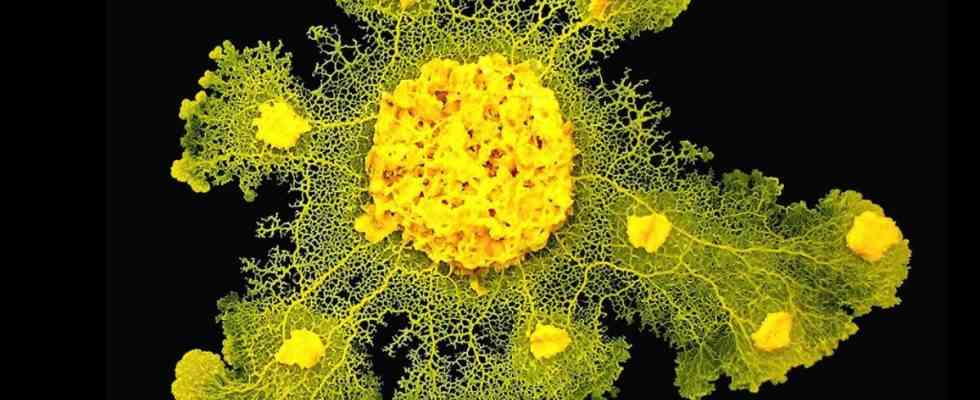If for some, to sleep is to die a little, for the blob it seems to be quite the opposite. This unicellular being, which has no brain but is able to learn and or even memorize the shortest way to get closer to its pantry, continues to reveal surprising faculties. This Physarum polycephalum, often yellow and viscous, neither mushroom nor animal, has just revealed some unsuspected abilities.
Toulouse scientists from Animal Cognition Research Center (CRCA) come from demonstrate that its aging was partly reversible after a period of dormancy or fusion with a younger congener.
For several years, these teams have been observing it closely, young, old, of different colors to learn more about the one who hides under the undergrowth. “We followed blobs for two and a half years in the laboratory. We characterized their behavior throughout their age, we noted changes with aging, in particular, a decrease in speed, this is what changes the most. Increased sensitivity to stress too. But on the other hand, we did not find any deficiencies in learning performance, unlike animals and humans,” emphasizes Audrey Dussutour, biologist and CNRS research director at the CRCA.
Regularly subjecting them to exercises, the researchers decided to study the impact that a good sleep or a fusion with a younger blob could have on their activity. “When we take these aged blobs and merge them with young blobs, we see that this slowing effect on speed disappears. When the two cells merge, they will share their cytoplasm, their enzymes. So a youngster who has everything to fight against age is going to share it with the aged blob. Moreover, following the merger, we can clearly see that the young blob is no longer as fast as before, it recovers from the stress of the old blob, and we observe a slight drop in its speed”, explains this specialist.
The blob can therefore go into “merger-acquisition” mode if you push it a little. A bit like the mutant Rogue capable of absorbing the superpowers of others, but without however draining all the vital energy of her young padawan.
He manages to smell the youth
And since he is full of resources, he knows how to sniff out which blob he should turn to to get the most out of this fusion. From a distance, he is indeed able to detect the age of his congener, to know if he is weakened, also irradiated or even poisoned. A bit like the zombies in World War Z who carefully avoid attacking the sick. “In my opinion, the secretions of a young blob must be slightly different from those of an old blob. They are known to attract each other because they secrete calcium into the environment. And we can imagine that the metabolism of the young being a little more vigorous secretes more calcium and the blob is more attracted, ”says Audrey Dussutour.
This advantageous alliance is not the blob’s only option to regain its abilities. This makeover is also seen when the blob wakes up, after having been put to sleep. A good sleep which allows them to find a good rhythm and which opens the door to other research. “It’s a cell that will at some point be able to recover. So, if she recovers, there must be molecular mechanisms somewhere that allow her to do so. The aim of the work we are currently doing is to try to identify these mechanisms. One can imagine that these are enzymes that could, for once, be used later for other cell types. Because the blob is not a cell type that is very, very different from that of the animal,” recalls Audrey Dussutour. It has no brain, but the blob still has a lot to teach us.

